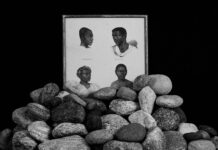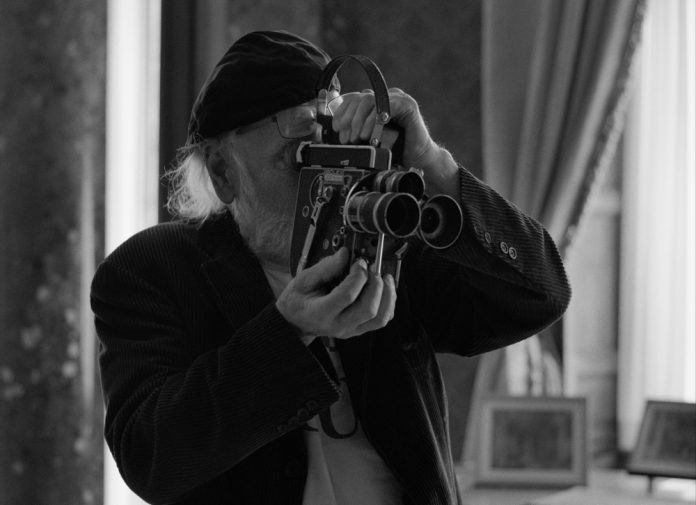
After a first table focused on looking at environmental issues, indigenous knowledge, the possibility of a “less cold” science, in addition to questioning the false dichotomy between nature and culture, the second presentation brought the debate closer to issues more directly linked to artistic production. In the presentations by Andrea Giunta, curator of the 12th Mercosul Biennial, and the artist duo Bárbara Wagner and Benjamin de Burca (currently participating in MANIFESTA 13), questions about the responsibility of art in the contemporary world, the search for a collective action, the visibility of marginalized knowledge and the need to escape the logic of the “self-centered body” in the arts reinforced a conductive line between the different speeches.
First to present, Giunta gave an overview of this year’s edition of the Mercosul Biennial (Online Bienal 12), which would take place in person in Porto Alegre and ended up migrating to the virtual environment due to the pandemic. Highlighting the plurality involved in the themes and in the show’s title, Female(s). Visuality, actions and affections, the Argentine emphasized the importance of this diversity being present in the constitution of the biennial curatorial team. In this sense, she emphasized the fundamental role of Fabiana Lopez, Dorota Biczel and Igor Simões, who brought attentive looks to artistic production, especially in Latin America, and also from other countries around the globe. A total of 25 countries were represented by more than 70 artists and collectives.
The term “feminine(s)” – not “feminine”, nor “feminisms” – represented for Giunta this choice for a plurality of points of view, not always only from women, believing in the “idea of difference as multiplicity and not as separation”. In this sense, the word “affection” also took place for curatorship, especially at a time of such fragility with the pandemic. “And when we were all isolated, it was very important to ask: how are the artists who were about to travel to Porto Alegre and could not go? So, we asked them to record short videos with their cell phones for our website, which was very important. This created an archive of affections, a type of presence of artists at the biennial that we had not previously planned. These are some good things that have happened.”
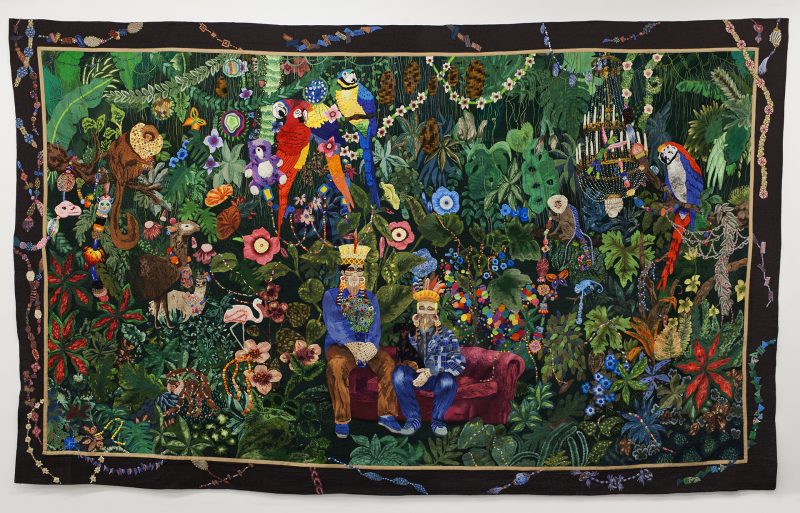
Affection, as Giunta stated in a recent interview with arte!brasileiros, is not disconnected from struggles, protests and an art that calls for social change. “With affection, powerful revolts were created,” she said. In this sense, Giunta presented at the seminar a series of works that she considers representative of the themes treated at the biennial, starting with a tapestry by Chiachio & Giannone that presents a scene of integration between man and nature, where people and animals are part of a same family – “not man as owner, controlling nature, but man in nature”. Then, the curator presented a photograph of the Argentine feminist collective Nosotras Proponemos: “We take into account activism, women’s rights, and also feminines and feminisms as the need to think again about all relations between the human and the world”, said.
Emphasizing that “the feminist struggle is for the rights over one’s own body”, she also presented works that deal with feminicide, such as Fatima Pecci Carou, and the various ways of experiencing the body, as in the works of Jota Mombaça, Liuska Astete, Janaina Barros, Lorraine O’Grady or Priscila Resende. The possibility of restructuring the language in the field of gender discussion arose in the production of Mujeres Públicas, while crucial questions about memory – and specifically colonial and Afro-Brazilian memory – were discussed in the work of Aline Motta. At this point in her speech, Giunta recalled a phrase by Rosana Paulino, “that told me something very important related to the theme of this seminar: in Christian and Catholic traditions, based on the Bible, God gave nature for men, in Afro-Brazilian religions, man and nature are together ”.
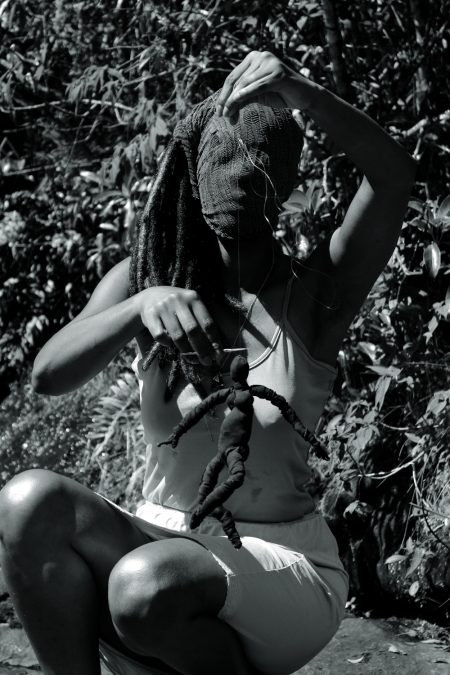
Ireland, France, and North Africa in dialogue
Continuing a fruitful and diverse series of audiovisual productions filmed in different parts of the globe, the duo Bárbara Wagner (Brazil) and Benjamin de Burca (Ireland / Germany) has just debuted, at MANIFESTA 13, in Marseille, the work One Hundred Steps. The 30-minute film was the subject of the duo’s presentation at the seminar, which also featured a firsthand view of the work. At the virtual seminar, while Benjamin showed up with his cell phone at the Marseille Music School, exposing the end of the work’s montage, Bárbara spoke from her home about the film’s production process, which started in late 2019. Few days after the seminar, arte!brasileiros also talked on the phone with Benjamin.
After works about frevo or brega in Recife, on the Maloya genres in Réunion Island (French department close to Africa), schlager in Munster (Germany) and rap in Toronto (Canada), the duo enters the universes of Irish popular music (with its harmonicas, chants and taps) and North African music with Arab roots in Marseille, in the south of France. If, on the one hand, the film deepens the research of the duo in marginalized musical universes, in a constant dialogue between documentary and fiction, between what is pop culture or traditional manifestation, on the other hand the film seems to bring new elements to the work of Bárbara and Benjamin. One Hundred Steps is, for example, the first film that takes place in two different countries and bluntly enters European and African colonial history.
According to Bárbara, the research started with the approval of a publicly funded project by the Irish Arts Council. Therefore, the first opportunity arose for the duo to develop work in Benjamin’s home country. It was in their search for the Irish region of Connemara that they came across the work of Irish documentary filmmaker Bob Quinn. “In the 1980s he developed a quartet of documentaries that spoke of the origin of Irish culture in a very sophisticated way, questioning the European hegemony in shaping the culture there and suggesting that the contact with countries in North Africa was essential,” said the artist. In the series, entitled Atlantean, “he asks: what if our Irish culture is much closer to Africa than Europe?”
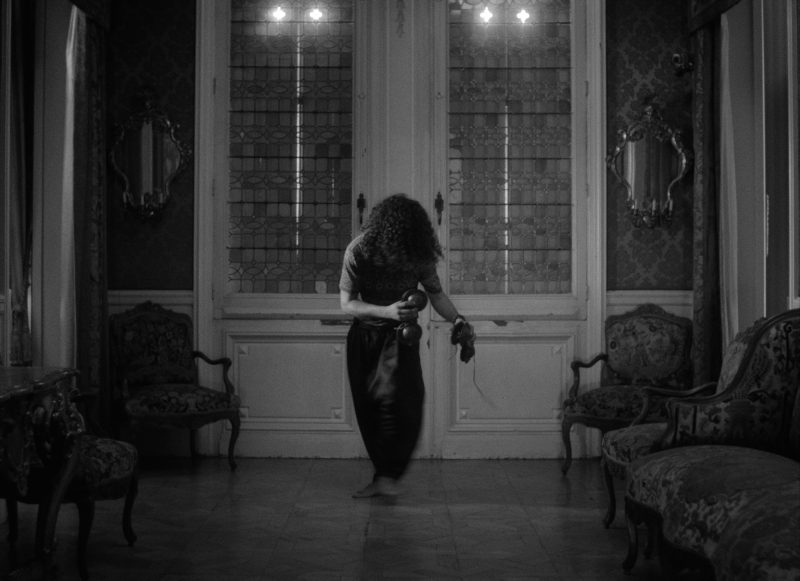
Based on this hypothesis and living with Quinn, now 87 years old, Bárbara and Benjamin had an initial project in mind until the moment when the MANIFESTA invitation came to “give a formal tie to the work”, according to Bárbara. In the end, the film became “kind of a visual and editing experiment between Ireland and southern France, in dialogue with North Africa”. For this, the duo invited popular artists to perform in two emblematic spaces for colonial history in these places – palaces that have become museums -, creating ambiguities, frictions, and moments of beauty with various layers of meaning.
In Ireland, musicians and dancers were filmed in spaces at Bantry House, a palace from the end of the 17th century directly related to British imperialism in the country and which, in addition to a sumptuous garden, has a 100-step staircase – the “hundred steps” of the title – built between 1840 and 1850, the decade of the great Irish hunger. “In every corner of Ireland there is a huge mansion built by the dying people. And if we think about it, this great hunger, which created a diaspora of almost 2 million people, is still very recent in the country’s history ”, says Benjamin. The artists who enter the house, therefore – and Bob Quinn appears there with his camera – “become that other voice, which is the voice of Irish culture”, according to Bárbara.
In Marseille, on the other hand, a museum house in an old bourgeois residence, “with a similar history, despite the quite different context”, served as a stage for the performance of North African musicians living in the city. “So, we created a way to get closer, without necessarily being comparing. It is speculation, again, but above all rhythmic and musical”, explains Bárbara. If Arab culture in North Africa appears explicitly at home in Marseille, it may also be diffused in Irish music, which, according to Quinn, drank from these roots. “And suddenly we look at these artists, as if they were visitors, the Irish and the Arabs, and the film creates this fantastic device in which we can realize the occupation of these spaces with another story”, concludes the artist. Because, according to Benjamin, “colonialism continues to exist in another way, more mental, more immaterial”.
In the speeches at the end of the table, Andrea Giunta emphasized, in line with the presentation by Bárbara and Benjamin, that “art has the capacity to be an archive, an archive of experiences that were created at different times. And with this file we can ask the questions of the present”. Thus, for her it is necessary to rethink the relationship of the body with the world, in the sense of moving away from the idea of the self-centered subject so common in art – “to understand, experience and feel that we are in the world”. Bárbara agreed: “In the sense of the body that experiences another form of knowledge, which is shared. Our work is an audiovisual work that is supported by collaboration. It is not possible to work alone, you can’t do it without friction, without difference”.






